Wingspan 1.1 – 1.4 m (Adult) Length 40 – 58 cm (Adult) Rank Species | Phylum Chordata Mass 0.43 – 1.4 kg (Adult) Higher classification Buteo | |
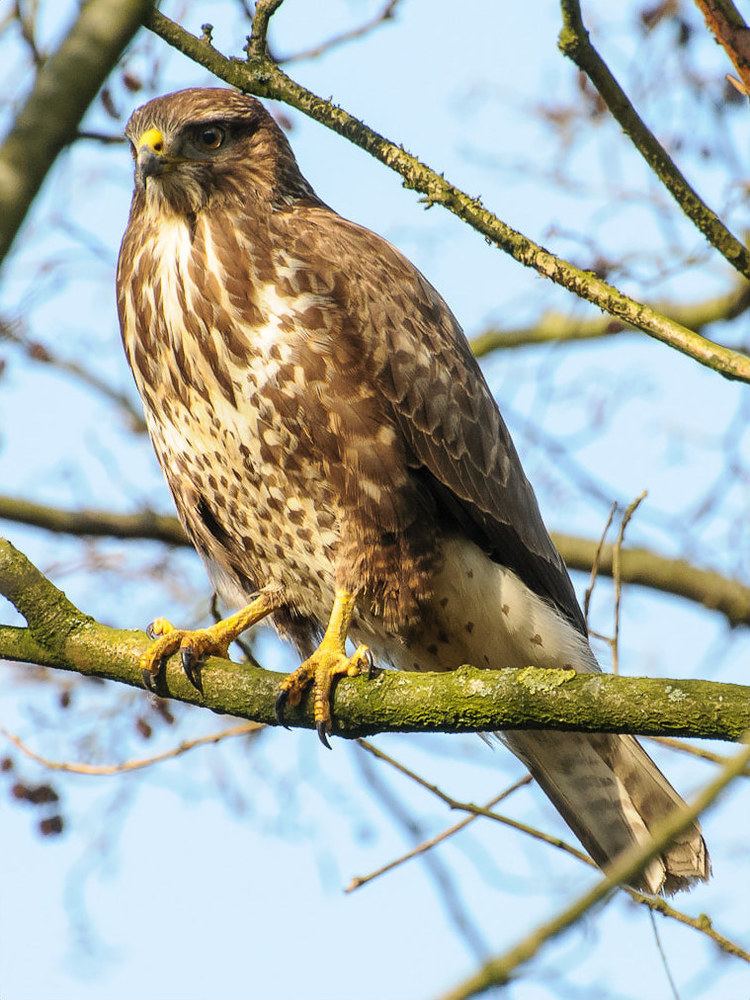 | ||
Similar Buteo, Bird, Eurasian sparrowhawk, Northern goshawk, Common kestrel | ||
Bto bird id summer buzzards common buzzard and honey buzzard
The common buzzard (Buteo buteo) is a medium-to-large bird of prey whose range covers most of Europe and extends into Asia. Over much of its range, it is resident year-round, but birds from the colder parts of the northern hemisphere typically migrate south (some well into the southern hemisphere) for the northern winter.
Contents
- Bto bird id summer buzzards common buzzard and honey buzzard
- Common buzzard in my north antrim garden
- Systematics
- Description
- Behaviour
- Status
- Steppe buzzard
- References

Common buzzard in my north antrim garden
Systematics
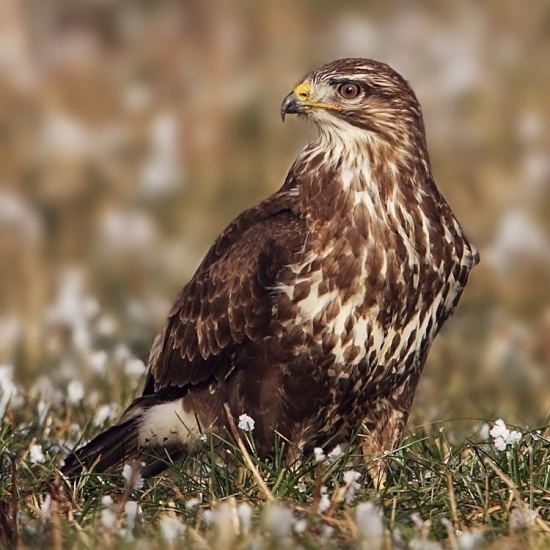
The first formal description of the common buzzard was by the Swedish naturalist Carl Linnaeus in 1758 in the tenth edition of his Systema Naturae under the binomial name Falco buteo. The genus Buteo was introduced by the French naturalist Bernard Germain de Lacépède in 1799 by tautonymy with the specific name of this species. The word buteo is Latin for a buzzard.
Buzzard subspecies fall into two groups. The western Buteo group is mainly resident or short-distance migrants. They are:
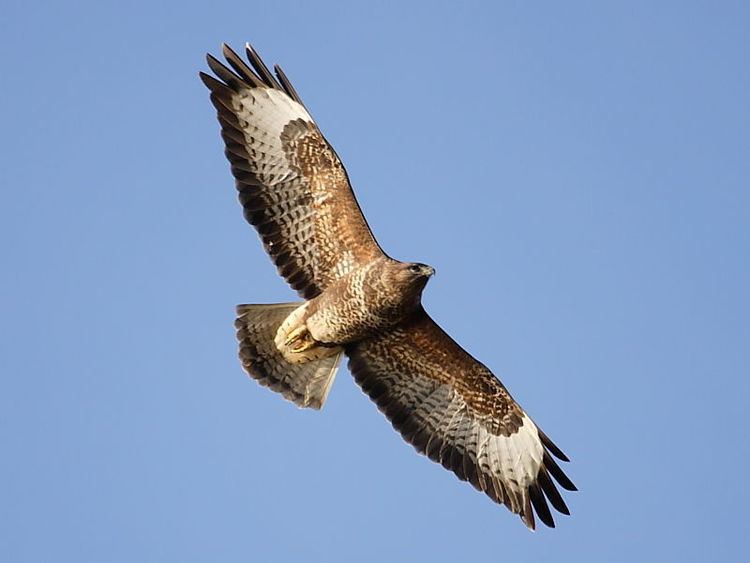
The eastern vulpinus group includes
Description
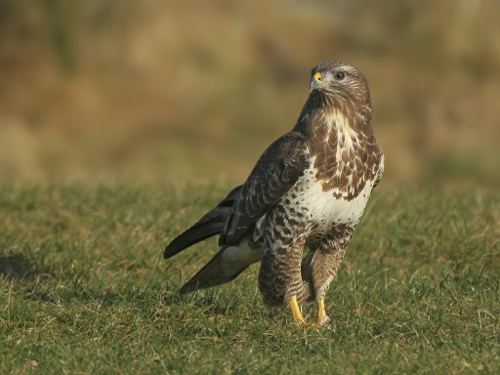
The common buzzard measures between 40 and 58 cm (16 and 23 in) in length with a 109–136 cm (43–54 in) wingspan and a body mass of 427–1,364 g (0.941–3.007 lb), making it a medium-sized raptor.

This broad-winged raptor has a wide variety of plumages, and in Europe can be confused with the similar rough-legged buzzard (Buteo lagopus) and the distantly related European honey buzzard (Pernis apivorus), which mimics the common buzzard's plumage for a degree of protection from northern goshawks. The plumage can vary in Britain from almost pure white to black, but is usually shades of brown, with a pale 'necklace' of feathers.
Behaviour
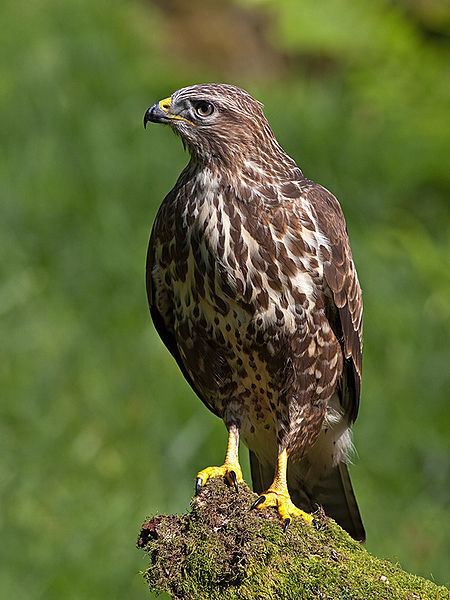
The common buzzard breeds in woodlands, usually on the fringes, but favours hunting over open land. It eats mainly small mammals, and will come to carrion. A great opportunist, it adapts well to a varied diet of pheasant, rabbit, other small mammals to medium mammals, snakes and lizards, and can often be seen walking over recently ploughed fields looking for worms and insects.
Buzzards do not normally form flocks, but several may be seen together on migration or in good habitat. The Victorian writer on Dartmoor, William Crossing, noted he had on occasions seen flocks of 15 or more at some places. Though a rare occurrence, as many as 20 buzzards can be spotted in one field area, approximately 30 metres (98 ft) apart, so cannot be classed as a flock in the general sense, consisting of birds without a mate or territory. They are fiercely territorial, and, though rare, fights do break out if one strays onto another pair's territory, but dominant displays of aggression will normally see off the interloper. Pairs mate for life. To attract a mate (or impress his existing mate) the male performs a ritual aerial display before the beginning of spring. This spectacular display is known as 'the roller coaster'. He will rise high up in the sky, to turn and plummet downward, in a spiral, twisting and turning as he comes down. He then rises immediately upward to repeat the exercise.
The call is a plaintive peea-ay, similar to a cat's meow.
Status
In parts of its range it is increasing in numbers. In Ireland it became extinct about 1910, but began to slowly recolonise the country in the 1950s, and is now a common and familiar sight over much of Ireland.
Steppe buzzard
The steppe buzzard, B. (b.) vulpinus breeds from east Europe eastward to the Far East (including Eastern China and South Asia), excluding Japan. It is a long-distance migrant, excepting some north Himalayan birds, and winters in Africa, India and southeastern Asia. In the open country favoured on the wintering grounds, steppe buzzards are often seen perched on roadside telephone poles.
The steppe buzzard is some times split off as a separate species, B. vulpinus. Compared to the nominate form, it is slightly smaller (45–50 cm (18–20 in) long), longer winged and longer tailed. There are two colour morphs: the rufous form which gives this subspecies its scientific name (vulpes is Latin for "fox"), and a dark grey form.
The tail of vulpinus is paler than the nominate form, and often quite rufous, recalling North American red-tailed hawk. The upper wings have pale primary patches, and the primary flight feathers are also paler when viewed from below. Adults have a black trailing edge to the wings, and both morphs often have plain underparts, lacking the breast band frequently seen in B. b. buteo.
